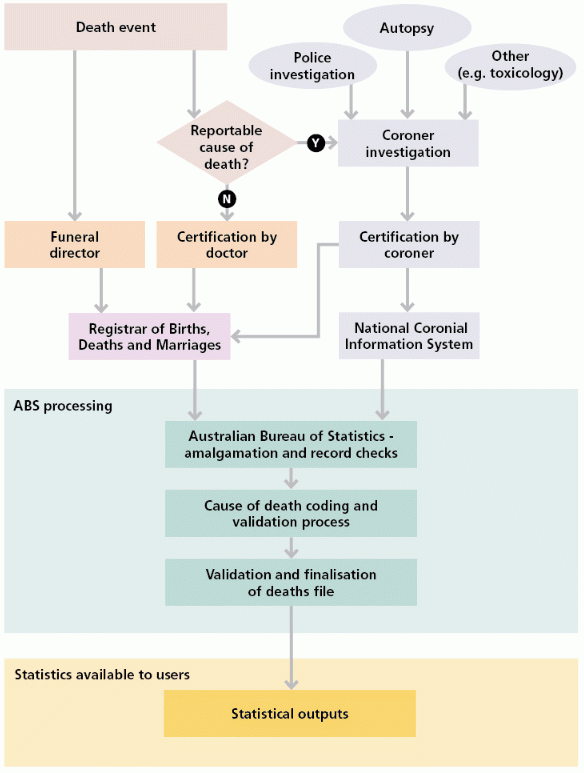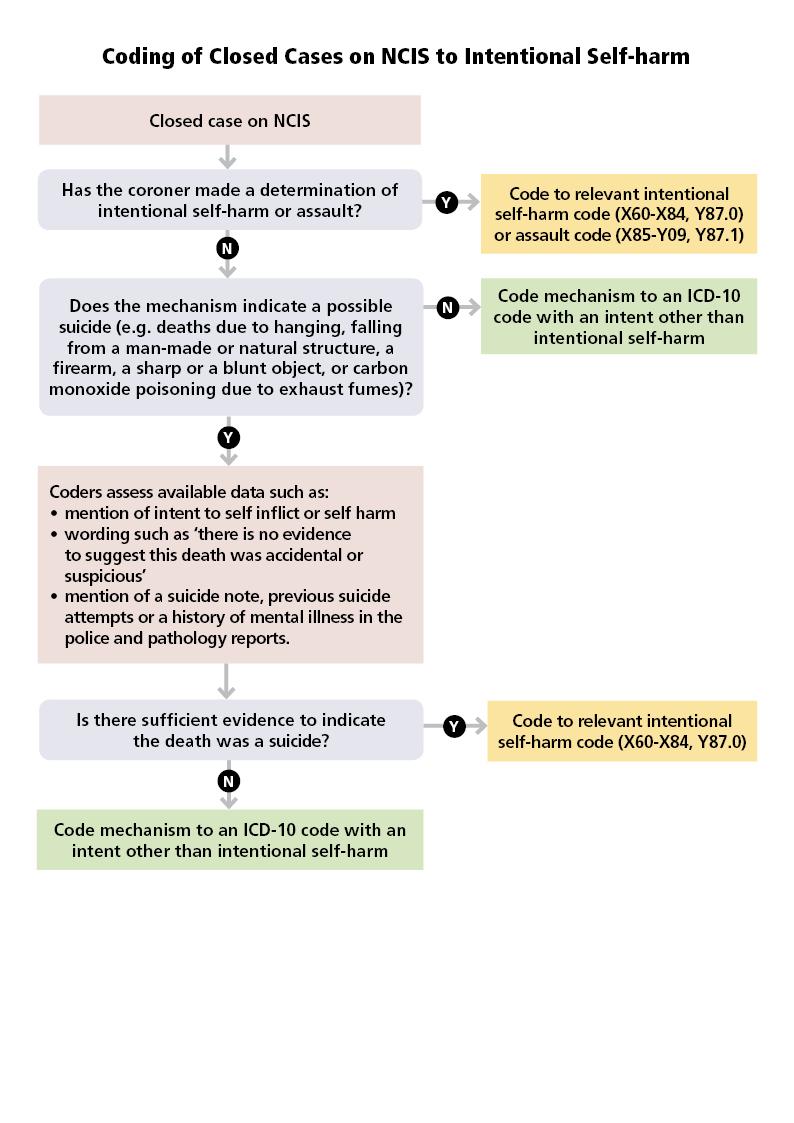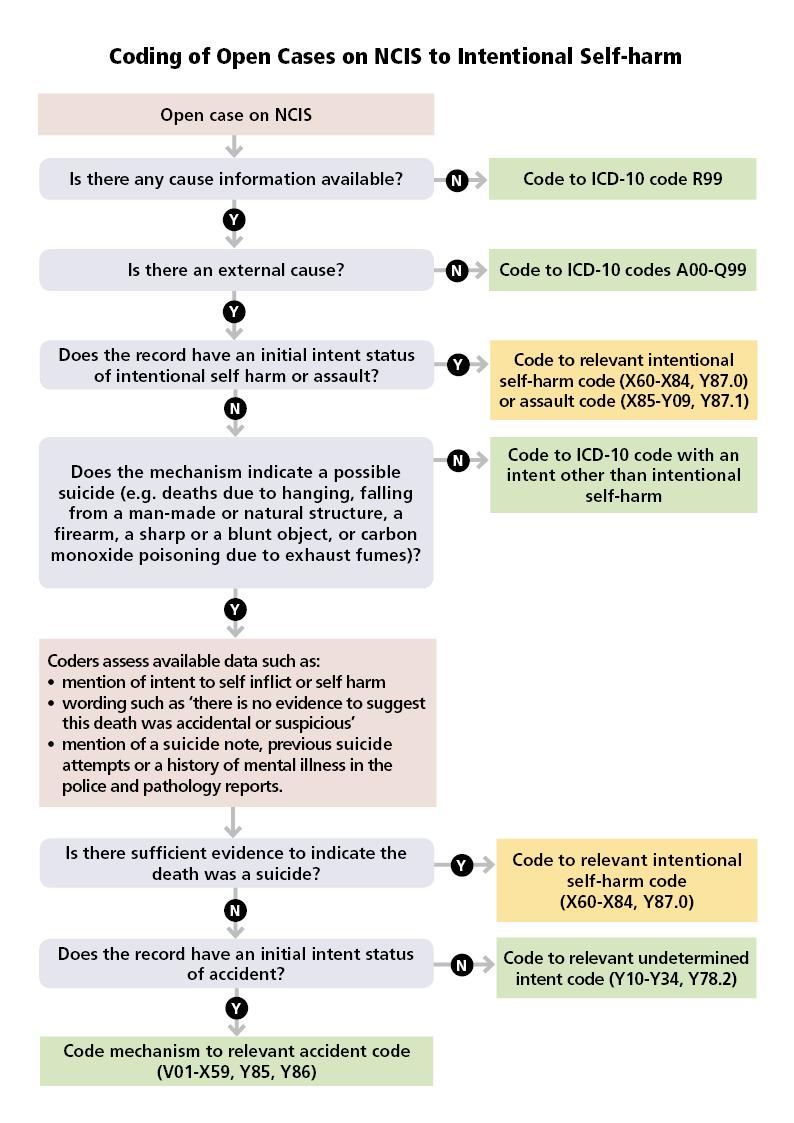Australian cause of death statistics
This publication contains statistics on causes of death for Australia, together with selected statistics on perinatal deaths.
Statistics on perinatal deaths for the 2007-2009 reference years were published separately in Perinatal Deaths, Australia, 2009 (cat. no. 3304.0).
Information in Causes of Death, Australia is not comparable with deaths data published in the monthly Provisional Mortality Statistics reports which provides preliminary counts of doctor certified deaths by date of occurrence in 2020.
In order to complete a death registration, the death must be certified by either a doctor using the Medical Certificate of Cause of Death, or by a coroner. In 2019, 86.7% of deaths were certified by a doctor. The remaining 13.3% were certified by a coroner. There are variations between jurisdictions in relation to the proportion of deaths certified by a coroner, ranging from 7.5% of deaths certified by a coroner and registered in Queensland, to 26.5% of deaths certified by a coroner and registered in the Northern Territory.
In order to complete a perinatal death registration, the death must be certified by either a doctor, using the Medical Certificate of Cause of Perinatal Death, or by a coroner. In 2019, 97.7% of perinatal deaths were certified by a doctor, with the remaining 2.3% certified by a coroner.
It is the role of the coroner to investigate the circumstances surrounding all reportable deaths and to establish, wherever possible, the circumstances surrounding the death, and the cause(s) of death. Although there is variation across jurisdictions in what constitutes a death that is reportable to a coroner, they are generally reported in circumstances such as:
- where the person died unexpectedly and the cause of death is unknown
- where the person died in a violent or unnatural manner
- where the person died during, or as a result of an anaesthetic
- where the person was 'held in care' or in custody immediately before they died
- where the identity of the person who has died is unknown.
The registration of deaths is the responsibility of the eight individual state and territory Registrars of Births, Deaths and Marriages. As part of the registration process, information about the cause of death is supplied by the medical practitioner certifying the death or by a coroner. Other information about the deceased is supplied by a relative or other person acquainted with the deceased, or by an official of the institution where the death occurred. The information is provided to the Australian Bureau of Statistics (ABS) by individual Registrars for coding and compilation into aggregate statistics. In addition, the ABS supplements this data with information from the National Coronial Information System (NCIS). The following diagram shows the process undertaken in producing cause of death statistics for Australia.
The diagram below outlines the Australian Cause of Death Statistics System. Each death is certified by either a doctor or coroner and the resultant information is provided to the Australian Bureau of Statistics (ABS) through the Registrar of Births, Deaths and Marriages in each state or territory. Information is also provided via the National Coronial Information System for those deaths certified by a coroner. The ABS processes, codes and validates this information, which is then provided in statistical outputs.
Australian cause of death statistics system
Image

Description
Scope of cause of death statistics
Ideally, for compiling annual time series, the number of deaths should be recorded and reported as those which occurred within a given reference period, such as a calendar year. However, there can be lags in the registration of deaths with the state or territory registries and so not all deaths are registered in the year that they occur. There may also be further delays to the ABS receiving notification of the death from the registries due to processing or data transfer lags. Therefore, every death record will have:
- a date on which the death occurred (the date of occurrence)
- a date on which the death is registered with the state and territory registry (date of registration); and
- a date on which the registered death is lodged with the ABS and deemed in scope.
With exception to the statistics published by Year of Occurrence section (Data Cube 13), all deaths referred to in this publication relate to the number of deaths registered, not those which actually occurred, in the years shown.
The scope for each reference year of the death registrations includes:
- deaths registered in the reference year and received by the ABS in the reference year;
- deaths registered in the reference year and received by the ABS in the first quarter of the subsequent year; and
- deaths registered in the years prior to the reference year but not received by ABS until the reference year or the first quarter of the subsequent year, provided that these records have not been included in any statistics from earlier periods.
From 2007 onwards, data for a particular reference year includes all deaths registered in Australia for the reference year that are received by the ABS by the end of the March quarter of the subsequent year. Death records received by the ABS during the March quarter of 2020 which were initially registered in 2019 (but for which registration was not fully completed until 2020) were assigned to the 2019 reference year. Any registrations relating to 2019 which were received by the ABS from April 2020 will be assigned to the 2020 reference year. Approximately 4% to 7% of deaths occurring in one year are not registered until the following year or later.
Prior to 2007, the scope for the reference year of the Death Registrations collection included:
- deaths registered in the reference year and received by the ABS in the reference year;
- deaths registered in the reference year and received by the ABS in the first quarter of the subsequent year; and
- deaths registered during the two years prior to the reference year but not received by the ABS until the reference year.
Coverage of cause of death statistics
The ABS Causes of Death collection includes all deaths that occurred and were registered in Australia, including deaths of persons whose usual residence is overseas. Deaths of Australian residents that occurred outside Australia may be registered by individual Registrars, but are not included in ABS deaths or causes of death statistics.
The current scope of the statistics includes:
- all deaths being registered for the first time;
- deaths in Australia of temporary visitors to Australia;
- deaths occurring within Australian Territorial waters;
- deaths occurring in Australian Antarctic Territories or other external territories (including Norfolk Island);
- deaths occurring in transit (i.e. on ships or planes) if registered in the State of 'next port of call';
- deaths of Australian Nationals overseas who were employed at Australian legations and consular offices (i.e. deaths of Australian diplomats while overseas) where able to be identified; and
- deaths that occurred in earlier reference periods that have not been previously registered (late registrations).
The scope of the statistics excludes:
- repatriation of human remains where the death occurred overseas;
- deaths overseas of foreign diplomatic staff (where these are able to be identified);
- stillbirths/fetal deaths (these are included in perinatal counts (see perinatal deaths, below)). In 2007-2009 these were published separately in Perinatal Deaths, Australia, but are now included in this publication.
Deaths registered on Norfolk Island from 1 July 2016 are included in this publication. This is due to the introduction of the Norfolk Island Legislation Amendment Act 2015. Norfolk Island deaths are included in statistics for "Other Territories" as well as totals for all of Australia. Deaths registered on Norfolk Island prior to 1 July 2016 were not in scope for death statistics. Prior to 1 July 2016, deaths of people that occurred in Australia with a usual residence of Norfolk Island were included in Australian totals, but assigned a usual residence of 'overseas'. With the inclusion of Norfolk Island as a territory of Australia in the ASGS 2016, those deaths which occurred in Australia between January and June 2016 with a usual residence of Norfolk Island were allocated to the Norfolk Island SA2 code instead of the 'overseas' category.
Acknowledgements
This publication draws extensively on information provided freely by the state and territory Registrars of Births, Deaths and Marriages, and the Victorian Department of Justice who manage the National Coronial Information System (NCIS). Their continued cooperation is very much appreciated: without it, the wide range of vitals statistics published by the ABS would not be available. Information received by the ABS is treated in strict confidence as required by the Census and Statistics Act 1905.

